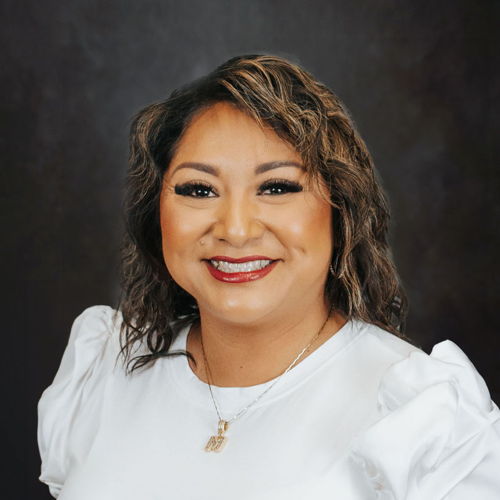Don't Confuse Access with Acceptance: A Guide for Women of Color in Leadership
Navigating the Difference Between Being Invited and Being Welcomed
-688128428b076.png)
The boardroom door opens. You walk in—the only woman of color at the table. Everyone smiles, shakes your hand, and welcomes you to the team. You've made it, right? You have access. But three months later, you realize something crucial: access and acceptance are not the same thing.
After two decades of leading in predominantly White institutional spaces, I've learned that the invitation to the room is just the beginning. The real work—and the real challenge—lies in understanding the difference between being granted access and being truly accepted as a leader. I'm not talking about gratitude or playing small. I'm talking about strategic navigation, authentic leadership, and building sustainable influence while maintaining your integrity. Because here's the truth: you don't have to choose between your identity and your success.
The Access Illusion
Access feels like victory. The job offer. The board appointment. The seat at the executive table. We celebrate these moments—and we should. But organizational behavior research on in-group and out-group dynamics tells us something critical: physical presence doesn't equal psychological inclusion.
Access looks like:
- Being invited to meetings
- Having your name on the org chart
- Getting the title and the salary
- Being asked to join committees or task forces
Acceptance looks like:
- Your ideas being heard and implemented
- Being consulted before major decisions
- Having your expertise valued and sought out
- Being defended when you're not in the room
The gap between these two realities is where many women of color find themselves trapped—present but not powerful, included but not influential.
The Tokenism Trap
Social identity theory explains why this happens. When you're the "only" or one of very few, you become what researchers call a "token"—a visible symbol of diversity rather than a valued contributor. You're simultaneously hypervisible and invisible: scrutinized for every move while your actual contributions are overlooked.
The tokenism trap manifests as:
- Being asked to speak for your entire race or gender
- Having your qualifications questioned more than others
- Being excluded from informal networks where real decisions happen
- Facing the "prove yourself again" cycle with every new project or promotion
Breaking free requires understanding that this isn't about your performance, but about power structures and unconscious bias. You can't individual-effort your way out of systemic issues, but you can develop strategies to navigate them.
The Survival vs. Success Distinction
Here's what I wish someone had told me earlier: don't mistake survival for success.
Survival mode looks like:
- Constantly proving you belong
- Minimizing parts of your identity to fit in
- Working twice as hard for half the recognition
- Accepting crumbs and calling them opportunities, and, eventually...
- Burning out from hypervigilance and code-switching.
Success mode looks like:
- Leading from your authentic self
- Setting boundaries around your time and energy
- Building strategic alliances and mentorship networks
- Creating opportunities for others while advancing yourself
- Sustaining your performance without sacrificing your well-being
The shift from survival to success is strategic; research on authentic leadership shows that leaders who integrate their identities perform better and create more inclusive environments for others. And that's what motivates me, and many of the folks in my circles - maybe you, too? Creating a better work environment for the people around us and those who come after us.
The Strategic Navigation Framework
Moving from access to acceptance requires intentional strategy. Here's your roadmap:
1. Map the Informal Power Structure
Organizational charts show formal authority, but real influence often flows through informal networks. Pay attention to:
- Who gets consulted before meetings?
- Where do the real conversations happen?
- Which relationships drive decision-making?
- Who has the ear of senior leadership?
Your action: Identify three key influencers and build authentic relationships with them. Not transactional networking—genuine connection based on shared interests or mutual value.
2. Document Your Contributions
In environments where your work might be overlooked or attributed to others, documentation becomes protection. Keep detailed records of:
- Your ideas and their implementation
- Projects you've led or significantly contributed to
- Positive feedback and measurable results
- Strategic recommendations you've made
Your action: Create a "wins journal" and update it weekly. This becomes invaluable during performance reviews and promotion discussions.
3. Build Strategic Alliances
You need three types of allies:
- Sponsors: Senior leaders who advocate for you in rooms you're not in
- Mentors: Experienced professionals who provide guidance and wisdom
- Peers: Colleagues at your level who can collaborate and support each other
Your action: Identify one person in each category and intentionally cultivate those relationships. Remember: reciprocity is key. What value can you provide in return?
4. Create Your Own Table
Sometimes the most powerful move is building your own platform. This might mean:
- Starting an employee resource group
- Launching a new initiative or program
- Speaking at industry conferences
- Writing thought leadership content
- Mentoring other women of color
Your action: Identify one way you can create visibility and value that showcases your expertise while helping others.
The Boundary Blueprint
Access without boundaries leads to exploitation.
Acceptance without boundaries leads to exhaustion.
You need both access and boundaries to build sustainable influence.
Essential boundaries include:
- Time boundaries: Not being available 24/7 or taking on everyone else's urgent tasks
- Emotional boundaries: Not absorbing others' stress or managing their feelings about diversity
- Professional boundaries: Not accepting assignments that undervalue your expertise or pigeonhole you into "diversity work"
- Identity boundaries: Not code-switching so extensively that you lose yourself
Remember: boundaries aren't walls—they're gates. You control what comes in and what stays out.
The Compound Effect of Authentic Leadership
When you lead authentically while navigating strategically, something powerful happens: you create space for others. Your success becomes a pathway, not just a personal achievement.
This looks like:
- Mentoring other women of color entering leadership, not monitoring who else gets access and tone-policing or gatekeeping them.
- Advocating for inclusive practices and policies, not preserving the status quo.
- Using your influence to open doors for others, not pulling the ladder up behind you.
- Modeling what authentic leadership looks like in your organization, not conforming to or recreating the same systemic barriers that limited your progress.
Research on transformational leadership shows that leaders who create inclusive environments drive better business results, higher employee engagement, and stronger organizational performance.
Your Next Steps
- Assess your current situation: Are you operating from access or acceptance? Survival or success?
- Map your strategic priorities: What relationships do you need to build? What boundaries do you need to set?
- Document your value: Start that wins journal today.
- Find your people: Identify your mentors, sponsors, and peer allies.
- Create your platform: How will you build visibility and influence while helping others?
The Truth About Belonging
Here's what I've learned: you don't earn belonging by making yourself smaller. You create belonging by showing up fully, contributing authentically, and refusing to accept anything less than the respect your expertise deserves. The organizations that thrive in the future will be the ones that move beyond access to true acceptance—where women of color don't just have seats at the table, but where their voices shape the conversation and their leadership drives results.
You were not invited to be decoration. You were invited because you bring something valuable that the organization needs. Don't let anyone—including yourself—forget that.
Walk into every room knowing this: your presence is not a favor to them. Your leadership is not a gift to be grateful for. Your success is not an accident to be explained away.
You belong here. Not because they let you in, but because you earned your way in. Now lead like it.


